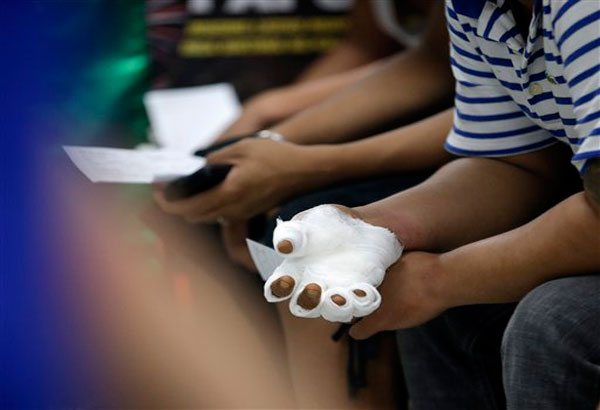Mayon Volcano Erupts!
June 25, 2001 | 12:00am
 After weeks of mild lava effusion, massive eruptions shook Mayon Volcano in Albay yesterday, sending more than 11,000 people fleeing from superheated rocks shooting high up from its crater.
After weeks of mild lava effusion, massive eruptions shook Mayon Volcano in Albay yesterday, sending more than 11,000 people fleeing from superheated rocks shooting high up from its crater.
This prompted government volcanologists to elevate the alert status from level 4 to the maximum 5.
"We have an explosive eruption in progress," said Philippine Institute of Volcanology and Seismology (Phivolcs) Director Ray-mundo Punongbayan.
"We have a tall eruption column, and pyroclastic flows are sweeping down the southeast sector," he said.
The strongest eruption occurred at 12:45 p.m. that sent molten lava descending on Mayon’s Bonga and Buyuan gullies.
Phivolcs said the pyroclastic flow signaled the start of violent eruptions marked by mushrooming ash clouds that will put areas around Mayon in grave danger.
Phivolcs also extended the seven-kilometer radius danger zone in the southeast flank to eight kilometers, necessitating the evacuation of villagers living within the "no-man’s land" area.
Earlier explosions also hurled lava to about 90 meters above the crater, sending more than 6,000 people fleeing as burning rocks tumbled down the slopes.
Ash and stone rained on the third district of Albay, notably Guinobatan town.
Ash falls reached Barangays Amtic and Tambo in Ligao City, and San Vicente, San Antonio, Quinastillojan, Bantayan, Tabiguian and Buang in Tabaco.
The explosions could be heard as far as Lingon Hill Observatory located 12 kilometers south-southeast of the volcano.
Motorists stopped to watch the smoke mushrooming above the crater, accompanied by an eerie humming sound of the volcano.
Minor explosions rocked the volcano early Saturday evening, leading to the discharge of fluorescent lava that shot 50 meters above the crater’s rim, the Phivolcs reported.
Volcanologist Ed Laguerta said villagers on the southeastern side of the volcano have been warned not to visit their farms within seven kilometers of the 2,467-meter mountain with a near perfect cone.
Evacuees from at least five villages in Legazpi City and the towns of Daraga, Tabaco and Malilipot in Albay province sought shelter in seven schools.
"It would come back and roll down as bits and pieces of lava... still hot and rolling downslope at the rate of 90 to 100 kilometers per hour with temperatures of 800 to 900 degrees Celsius," he said.
Punongbayan said if that happened, the areas on the southern flank of the volcano which includes Legazpi City would be at risk.
He said alert level five may last for one to two weeks. He added that the eruptions may remain subdued, and the alert pegged at level four.
A popular tourist attraction, Mayon has erupted 49 times in 400 years. Its latest eruption was in February last year, forcing the evacuation of thousands of residents.
The most destructive eruption was in 1814 when 1,200 people were killed and the entire town of Cagsawa buried in volcanic ash.
The Philippine National Red Cross and the Office of Civil Defense prepared to rush relief goods consisting of canned goods, used clothing and other supplies to the evacuation centers in Legaspi.–With Celso Amo, Cet Dematera
BrandSpace Articles
<
>
- Latest
- Trending
Trending
Latest
Trending
Latest
Recommended
December 23, 2024 - 12:00am
































